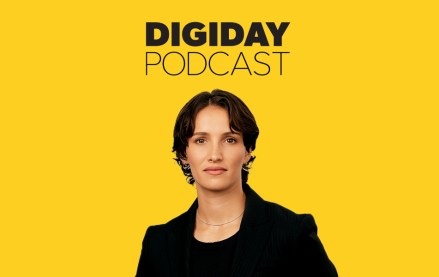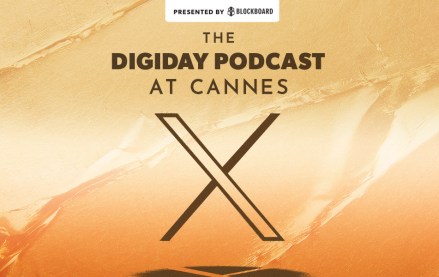How Domino’s CMO Kate Trumbull navigates inflation and reviving the brand

Subscribe: Apple Podcasts • Spotify
Fast food and quick service restaurant brands had a rough go over the past few years as shoppers have tried to save a few bucks amidst rising grocery prices and inflation. Seemingly, parts of the brand playbook are seeing a rewrite with things like $5 deals to make consumers feel they’re getting more bang for their buck.
It’s a tale all too familiar to Domino’s, the more than 60-year-old pizza brand that has marketed its way through brand lulls to try and win back customers who have pulled back on dining out. There were the “30 minutes or less” campaigns of the 90s, Pizza Turnaround in 2010 (when the pizza chain acknowledged the recipe needed work) Paving for Pizza in 2018, where Domino’s paved roads to ensure pizzas arrived to customers in good condition, and today’s Emergency Pizza, a pizza giveaway for so-called emergencies like burned dinner.
In this episode of the Digiday Podcast, Kate Trumbull, Domino’s evp and CMO joins co-host, and senior marketing reporter, Kimeko McCoy, to talk about Domino’s brand playbook.
Here are a few highlights from the conversation, which have been edited for length and clarity.
A campaign two years in the making
We were strategic in wanting to launch this [Emergency Pizza] campaign right after we launched our new loyalty program because we really felt like a free pizza was one of the greatest incentives and reasons to come to us. A loyalty program seems to attract people who are already loyal to you because it’s a lot to ask someone to give your information. You’re going to join loyalty programs when you think you’re going to come back many times. And so the free pizza was really the carrot. That was one of the big opportunities, was adding loyalty members. We added 2 million additional active members to our loyalty program in Q4 2023, largely due to the program.
‘Oh yes, we did’ moments
You see a lot of brands in [quick service restaurants], when value became so critical [last] year, they ran to: How do I get the lowest price in front of customers to attract them? But the challenge and risk with that is A) Devaluing your product, but B) Everyone’s doing the same thing. If everyone’s running a $5 special, then how do you stand out? You don’t stand out. So for us, the “Oh yes we did,” [Editor’s note: a Domino’s slogan and previous marketing campaign] is trying to do that. Deliver value, but do it in a way that breaks through that clutter and also feels very ownable to Domino’s.
Build a brand with free pizza
At the end of the day, we’re getting an order from a consumer. As a lot of new consumers come in, that’s incremental. You also want to do the math and modeling on how many of those customers are going to come back, and then what’s their lifetime value? You can do all the research in the world. You don’t really ever know exactly how consumers are going to react. But because we’ve done so many campaigns like this in the past, we’ve gotten pretty good at knowing what to expect and knowing the levers we can pull.
More in Podcasts

How TikTok’s ‘The Secret Lives of Mormon Wives’ landed on Hulu, with Select Management Group’s Danielle Pistotnik
The talent manager and executive producer of “The Secret Lives of Mormon Wives” joined the Digiday Podcast to break down the process of the reality show finding a home on Hulu.

Digiday Podcast at Cannes: Former Bachelorette Rachel Lindsay makes the case for creators
Between panels and parties, creators are looking to get face time with ad execs, brand marketers and partners like Spotify. However, rather than coming to the Croisette to strike deals, they’re playing a long game.

Digiday Podcast at Cannes: From center stage to closed doors, inside X’s quiet Cannes strategy
Once a Cannes hotspot, Twitter Beach is no more. In this episode, we explore X’s quiet retreat from the Croisette—and why no one’s talking about the TikTok ban either.








